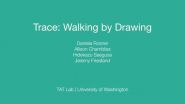(Press-News.org) PROVIDENCE, R.I. [Brown University] -- Surveys of loved ones who lost elderly relatives show that the perception of the quality of care for the dying in the United States has worsened over the last decade. For all the health care industry has done to try to make progress, huge gaps remain between how care is delivered and what patients and their loved ones want, reports a new study in the Journal of Palliative Medicine.
"People are less satisfied with care at the close of life, and I think it's now urgent for us to start thinking about what interventions we can do to improve care at the end of life given that we are facing a Silver Tsunami," said Dr. Joan Teno, lead author of the study and professor of health services, policy and practice in the Brown University School of Public Health. The findings come less than a year after an Institute of Medicine report, co-authored by Teno, called for improvements in end-of-life care.
Teno and her co-authors compared data from two surveys -- one conducted in 2000 and the National Health and Aging Trends Study done between 2011 and 2013 -- in which more than 1,200 people who had lost close loved ones in one of those periods rated aspects of the decedents' end-of-life care. In 2000, 56.7 percent of 622 respondents rated care as excellent, but a decade later only 47 percent of 586 people could say the same. Even after the researchers statistically controlled for various possible confounders, including age, race, ethnicity and even the nature of the decedents declining health, the latter sample was still 30 percent less likely to report that care was excellent.
The study concerned people 65 and older who resided in their community, rather than in nursing homes, at the time of death.
While the overall results suggest that care may not be improving for this population, other findings revealed more specific ways in which care either improved or fell short of patient and family desires. For example, a greater percentage of people (25.2 percent in 2011-13 vs. 15.5 percent in 2000) reported an unmet need for pain management, but health care providers improved in the frequency with which they discussed spiritual or religious concerns with patients and families.
Many quality indicators remained about the same, based on the survey respondents reports. Loved ones, for example, continued to report at about the same rates that decisions were made without enough of their input (13.8 percent in 2011-2013), or against the decedent's preferences (20.2 percent) when the patient was in intensive care in the last months of life.
The lack of improvement is disappointing, Teno said, because policymakers and health care providers have made many attempts over the last decade to improve end-of-life care.
Need for reform
The most important change has been a vast expansion in the availability of hospice and palliative care services. The new study, and some of Teno's prior work, suggests that while hospice improves care for the dying, it is frequently misapplied.
"It all relates to how we are using it," she said. "One of the concerns is that from a population perspective you may have more people receiving hospice but if they are not receiving enough of those services then it becomes really problematic."
Hospice did elevate the perception of end-of-life care in the new survey. Among a subset of people who lost loved ones between 2011 and 2013, 60.9 percent of those for whom hospice was involved rated care as excellent, compared to 46.7 percent for whom hospice was not involved.
But in the last decade, Teno's work has shown, more people have also been referred to hospice too late to do much good. People have also become more likely to end up in intensive care and to experience burdensome transitions between institutions in the last few days of life.
To a great extent, these trends are driven by how Medicare compensates health care providers. They are paid for performing procedures rather than for assessing the care preferences of patients and their families, wrote Teno and her colleagues in the journal. The private sector may lead the way to change, Teno noted, as providers respond to reforms that steer payments more toward quality and away from raw volume of services.
"Our findings support the 2014 IOM report that calls for improved advance care planning, a major restructuring of our health financing, increase in transparency, and more accountability of health care providers," the authors wrote.
INFORMATION:
In addition to Teno, the paper's co-authors are Pedro Gozalo and Vincent Mor of Brown University, Vicki Freedman of the University of Michigan and Judith Kasper of Johns Hopkins University.
The National Institute on Aging (grant U01-AG032947) and the Retirement Research Foundation funded the research.
DALLAS, May 6, 2015 -- People with hemorrhagic strokes (brain bleeds) are more likely to survive if they are treated at a comprehensive stroke center, according to research published in the Journal of the American Heart Association.
Hemorrhagic strokes, which account for about 13 percent of all strokes, are caused when a weakened blood vessel in the brain ruptures and bleeds in the surrounding brain. Comprehensive stroke centers typically have the specialists and trained personnel to deal with patients with these ruptures or other types of bleeding in the brain. They ...
Insurance coverage has increased across all types of insurance since the major provisions of the federal Affordable Care Act took effect, with a total of 16.9 million people becoming newly enrolled through February 2015, according to a new RAND Corporation study.
Researchers estimate that from September 2013 to February 2015, 22.8 million Americans became newly insured and 5.9 million lost coverage, for a net of 16.9 million newly insured Americans.
Among those newly gaining coverage, 9.6 million people enrolled in employer-sponsored health plans, followed by Medicaid ...
Psychologists are to improve online health information on lung cancer after research showed that family members are more likely to search online to encourage loved ones to seek help.
This is one of the outcomes from research by PhD student Julia Mueller based in the School of Nursing, Midwifery and Social Work at The University of Manchester (part of the Manchester Cancer Research Centre) who will present her study today, Thursday 7 May 2015, at the Annual Conference of the British Psychology Society being held in Liverpool.
Julia Mueller said: "People displaying ...
The ulcer-causing bacterium Helicobacter pylori can directly interact with stomach stem cells, causing the cells to divide more rapidly, according to a new study by researchers at the Stanford University School of Medicine.
The increased cell division was observed in mice, but the findings could explain why H. pylori is a risk factor for gastric cancer in humans, the researchers said.
They used 3-D microscopy to identified colonies of the bacteria deep within human stomach glands, where stem cells and precursor cells that replenish the stomach's lining reside.
One ...
MADISON, Wis. -- The suspicion that the federal Affordable Care Act reduces options for patients to choose their health care providers proves to be true, according to a new study co-authored by David Weimer, a professor with the La Follette School of Public Affairs at the University of Wisconsin-Madison. However, the quality of hospitals in insurance exchange networks was as good or better than those in commercial insurance networks.
The study, just published in the May issue of the journal Health Affairs, compared the hospital networks available to California consumers ...
Creative athletes have been using geographic information systems to transform their running routes into kangaroos, robots and other works of art that they share online, and one romantic cyclist last year even spelled out "Will you marry me, Emily?" with his bike.
A new mobile app developed at the University of Washington does the opposite. The Trace app turns a digital sketch that you draw on your smartphone screen -- a heart, maple leaf, raindrop, sailboat -- into a walking route that you can send to a friend or loved one. The recipient of the "gift" tells the app how ...
Scientists at the National Institutes of Health have solved a long-standing mystery about the origin of one of the cell types that make up the ovary. The team also discovered how ovarian cells share information during development of an ovarian follicle, which holds the maturing egg. Researchers believe this new information on basic ovarian biology will help them better understand the cause of ovarian disorders, such as premature ovarian failure and polycystic ovarian syndrome, conditions that both result in hormone imbalances and infertility in women.
Researchers at the ...
The Alaska salmon fishery is touted as one of the best in the world. When measured with an ecological yardstick, it is - fish stocks are healthy and the fishery is certified by the Marine Stewardship Council as consistently meeting rigorous biological standards. Fish are individually counted as they swim upstream to ensure there are enough to breed.
But Alaska salmon falls short and lags behind some of the world's fisheries in how it benefits local fishermen, processing workers and nearby rural communities, according to a new assessment that ranks the vitality of a fishery ...
Diets of snakes from a temperate region in South America may depend more on phylogeny (ancestry) than ecology, according to a study published May 6, 2015 in the open-access journal PLOS ONE by Gisela Bellini from Instituto Nacional de Limnología, Argentina and colleagues.
Some scientists believe that the deep history hypothesis based on phylogeny -- the history of evolution, or ancestry and relationships between snakes -- and ecological interactions from the competition-predation hypothesis may act together to determine the structure of snake communities. The authors ...
Post-surgical leaks that develop after a segment of the colon has been removed and stitched back together often are caused not by negligence or technical error but by bacteria in the bowel that elude antibiotics, according to new evidence about this devastating complication of gastrointestinal surgery.
Such leaks, which can develop days or weeks after the procedure, allow the bowel's contents to spill into the abdomen and can cause pain, fever, sepsis and even death.
In patients undergoing high risk surgery such as in the rectum, leak rates can approach 30 percent. ...


